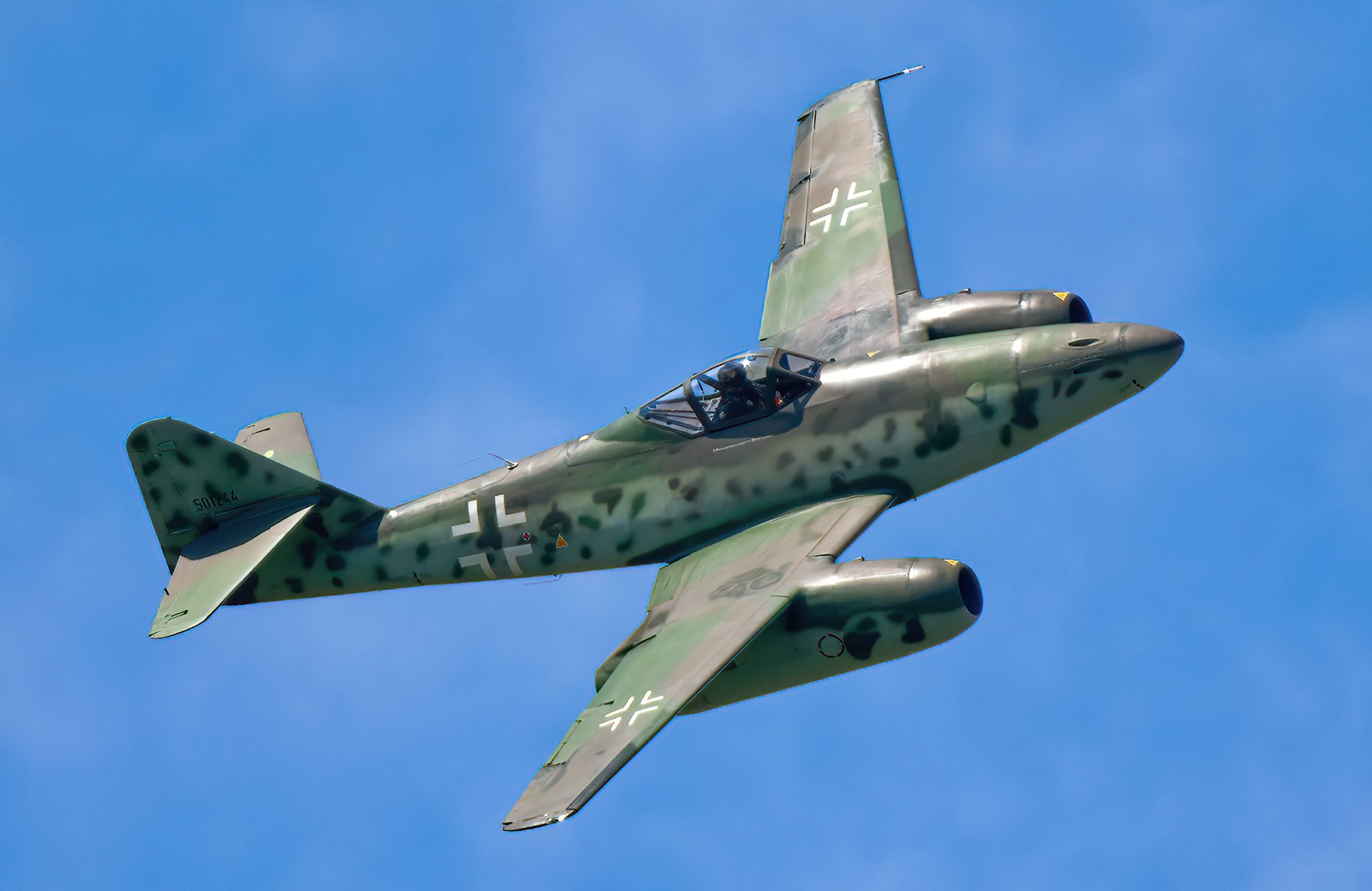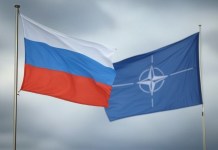The world’s first jet-powered fighter, Germany’s Messerschmitt Me 262, which ushered in the jet age in the concluding months of the Second World War, made its debut at the Royal International Air Tattoo (RIAT) for the first time earlier this week.
Rafale Fighters ‘Go Missing’ In Official Statements Of Both India & France; Is Indian Navy Really Getting Rafale-M?
The plane that stunned allied fighters with its powerful onboard cannon, rockets, and raw speed, often represents the pioneering military, scientific and technological advances of Nazi Germany.
The Me 262 flew alongside another iconic aircraft, Britain’s Supermarine Spitfire, ahead of the two-day air show that began on July 14. The Spitfire was the AB910 that flew during Operation Jubilee in August 1942, which saw one of the largest air battles in the war.
The Me 262 is a replica of the original aircraft built by the Airbus Messerschmitt Foundation, which produced five planes from scratch, perusing fragment drawings in a multiyear restoration process. Messerschmitt-Bölkow-Blohm, the wartime German aircraft manufacturer, was bought by Dutch Aerospace after the war, now part of Airbus.
With the first flight on April 18, 1941, and formal operational introduction in April 1944, the plane was too late and too small in numbers to affect any significant outcome in the war for Germany.
Particularly, the German industry of the time was hampered by shortages in materials like chromium and nickel owing to Allied raids on its factories, besides the complex metallurgical issues in its Junkers Jumo 004 jet engines.
World’s First Jet Fighter At World’s Largest Military Air Show
The RIAT is considered the world’s largest military air show, according to a report in the Swindon Advertiser, and is held at Royal Air Force (RAF) base in Fairford.
Organizers also announced that the Me 262 will also participate in a flyby on Saturday and Sunday. Peter Reochh, head of air operations of the RAF Charitable Trust Enterprises, said the reason behind bringing the Me 262 was to have a break from the usual lineup of modern digitally-enabled jet fighters.
“Visitors to the Air Tattoo are used to seeing the power and agility of modern jet aircraft such as the Typhoon and Gripen in our flying display, so we’re excited to be able to show them something very different with the Me 262,” Reochh was quoted in the Swindon Advertiser report.

In a report on British Air Shows, CEO of Airbus Defense and Space Michael Schollhorn said: “The Messerschmitt Me. 262 has never been displayed at a UK airshow before, and a successor company of Messerschmitt is honored to bring it from its home in Manching, Bavaria. The Me 262, the first series production jet engine fighter plane, represents a milestone in aeronautical technology. It is a privilege to welcome the legendary Me 262 to UK skies.”
The Royal Air Force Battle of Britain Memorial Flight (RAFBBMF) tweeted that the Spitfire flew to greet the Me 262 replica ahead of its arrival at RIAT. The two planes then “took part in an air-to-air aerial photography shoot to mark the rare occasion of these two aircraft types flying together.”
The Me 262 has a tubular body with a low-wing configuration in a swept-back shape and one jet engine on each engine in an underwing setup. Luftwaffe pilots claimed over 542 aerial victories on Allied planes, according to William Green’s 1970 book ‘The Warplanes of the Third Reich.’
Performance & Armament
The plane could touch a maximum speed of 540 miles (869 kilometers), a cruising speed of 460 miles (740 kilometers), a range of 650 miles (1046 kilometers), and fly at a maximum altitude of 38,000 feet, according to the National Museum of the United States Air Force (NMUSAF).
It carried four MK-108 cannons, 1000 pounds (453 kilograms) of bombs, and 55mm R4M rockets, which Luftwaffe pilots used to fire on Allied bomber formations over Germany.
There have also been claims that interference from Adolf Hitler and Luftwaffe chief Hermann Göring was partly responsible for the delay in development. The two wanted it to be a fast-flying medium-altitude bomber and ground attack aircraft.
This morning OC BBMF flew out in Spitfire AB910 to greet the @Airbus Messerschmitt Foundation Me262 replica ahead of its arrival to RIAT. The Me262 and our spitfire took part in an air to air photography shoot to mark the rare occasion of these two aircraft types flying together! pic.twitter.com/zCbQjy2PA4
— RAF BBMF (@RAFBBMF) July 12, 2023
Kills & Tactics
The Me 262’s first victim was a British twin-engine Mosquito fighter. On July 25, 1944, it fired at the Royal Air Force (RAF) aircraft flying over Munich on a photo-reconnaissance mission. According to the Warfare History Network, the Mosquito began trailing smoke but later disappeared, landing safely in Italy.
“The German jet scored heavily against Allied bomber formations. However, US Army Air Forces bombers destroyed hundreds of Me 262s on the ground,” the NMUSAF further said. Another Mosquito was shot down on August 8. The Me 262 was also used as a night fighter with integral radar in the very final months of the war.
US Army Air Force (USAAF) planners had been hearing reports about a fast-flying German jet. The reports were “being taken seriously,” but many “pilots refused to believe them,” wrote Lt Gen James H. Doolittle.
Doolittle had planned the daring raid on Tokyo in 1942 in response to the December 7, 1941, Pearl Harbour attack. He later joined the US Eighth Air Force in Europe. “Doolittle recalls one bomber pilot who was stunned at the quickness and severity of a Me 262 attack. One explosive shell, most likely from an MK-108 cannon, entered through the bomber’s bomb bay, killing one and injuring four other airmen,” the article on WFH said.
Allied pilots then resorted to attacking German airfields and striking the Me 262s on the ground, knowing the jets were most vulnerable during take-off and landing. This forced Luftwaffe pilots and ground crews to land the plane on parts of autobahns (highways) and conceal it in nearby wooded areas to save the jets “from marauding and opportunistic American P-51 Mustangs.”
The practice is being revisited now with the Agile Combat Employment (ACE) tactic pioneered by Sweden and adopted by the US. Fighters are operated from smaller airfields and highways to be spread out and not be concentrated at large single air bases, which can come under attack by enemy missiles and bombers.
- The author can be reached at satamp@gmail.com
- Follow EurAsian Times on Google News




